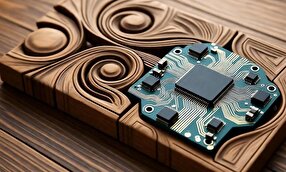University of Tehran Scientists Design Material Interaction Detection Device

“The technology used in this device is based on surface plasmon resonance (SPR). The SPR optical sensor system is an influential tool in biosensor technology that has an unlabeled nature, remarkable sensitivity, and the ability to provide real-time detection. SPR sensors provide accurate measurements of molecular interactions, including biological and chemical analytes, by considering changes in refractive indices,” said Mohammad Mohammadi Massoudi, a faculty member of the Intelligent Systems Department of Interdisciplinary Faculties of Sciences and Technologies of the University of Tehran.
“This device has significant advantages, including cost-effectiveness and the ability to perform simultaneous comparative studies. SPRI-based biosensors have attracted the attention of many researchers in the biochemical field due to their unique features, including multiple detection, simple and stable configuration, and real-time monitoring,” he added.
“In similar commercially produced samples, initial settings are required by inserting the sensor chip. However, in this device with the technique used, initial settings of the optical system are no longer required. Also, the cost of manufacturing the device is much lower than foreign samples,” Mohammadi Massoudi underlined.
Surface plasmon resonance (SPR) is a phenomenon that occurs where electrons in a thin metal sheet become excited by light that is directed to the sheet with a particular angle of incidence, and then travel parallel to the sheet.
Assuming a constant light source wavelength and that the metal sheet is thin, the angle of incidence that triggers SPR is related to the refractive index of the material and even a small change in the refractive index will cause SPR to not be observed.
This makes SPR a possible technique for detecting particular substances (analytes) and SPR biosensors have been developed to detect various important biomarkers.





















